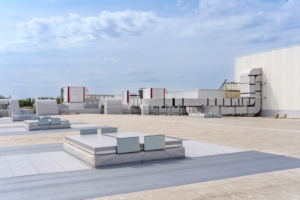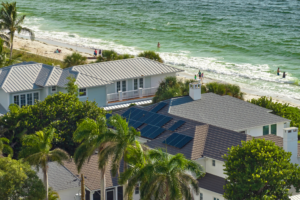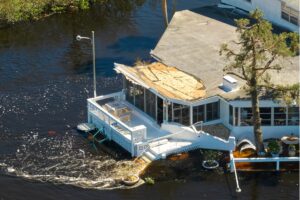Hurricanes are among the most destructive natural disasters, bringing devastatingly high winds, heavy rainfall, and storm surges that can cause widespread damage and loss of life. These powerful storms can strike coastal areas and inland regions with little warning, and leaving residents with only a short amount of time to prepare. In this blog, we’ll explore the dangers & tips for a hurricane so that you can weather the storm.
Dangers
Understanding some of the most severe dangers posed will better prepare you for anything the storm throws your way.
-
- Devastating Winds: A hurricane can be accompanied by strong winds up to 200 miles per hour. These winds can cause significant damage to buildings or completely destroy them. Vehicles, infrastructure, power lines, and trees are all susceptible to immense damage and can become airborne, which poses its own dangers.
-
- Heavy Rainfall: Alongside devastating winds, hurricanes bring flood-inducing rains potentially causing landslides. Rising sea levels have provided hurricanes with an ample supply of water to produce monstrous storm surges.
-
- Storm Surges: When water level rises dramatically at abnormally high levels storm surges occur and they have the ability to travel several miles inland. Storm surges wreak havoc and leave destruction for miles.
In the aftermath of Hurricane Ian, Governor DeSantis of Florida surveys the destruction that spread across Fort Myers. In an interview with BBC, DeSantis comments, “To see a house just sitting in the middle of Estero Bay, literally must have gotten picked up, flown because of the massive wind speed and the storm surge and depositing in a body of water.”
Tips
It’s clear hurricanes are forces to be reckoned with, destructive, dangerous, and downright terrifying. For your safety, it is important to properly prepare and have plans in place.
-
- Evacuate: If local authorities have given the order to evacuate, listen and follow the prescribed protocols. Don’t wait.
- Supplies: Stock up! The time to prepare is before the storm (previous post link). This is important whether you evacuate or stay, but it’s all the more crucial if you weather the storm. You need several days, to weeks, of supplies to be prepared.
- Secure your Property: If you haven’t read our Day 3 Post for Hurricane Preparedness Week, Review Your Policy– We discuss the importance of reviewing your policy and why it’s important to not only protect your property from potential damage, but document it.
- Stay Informed: Always have access to current weather information from your local authorities and the National Hurricane Center. FloridaDisaster.org recommends an NOAA Weather Radio that is battery operated or hand cranked. For a downloadable checklist, click here!
- Stay Indoors: The volatility of a hurricane poses too high a risk to venture outdoors once the hurricane hits. Avoid windows and doors.
Be informed and prepared to endure the devastatingly high winds, heavy rainfall, and storm surges hurricanes bring. Widespread damage will be imminent. However, employing these tips and knowledge about this destructive natural disaster gives you the best chance at safety and security. For more information on the dangers & tips for a hurricane, please visit Prepare before the storm.









